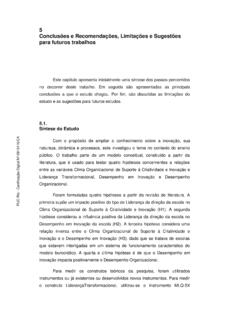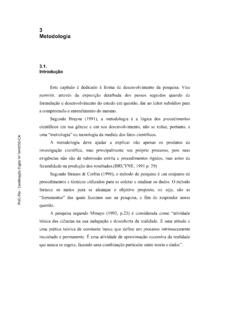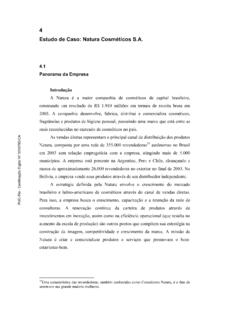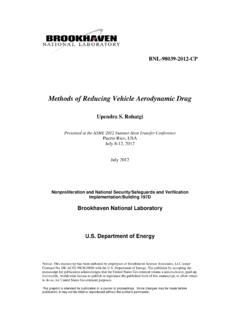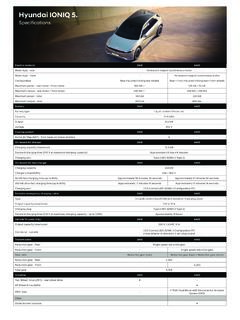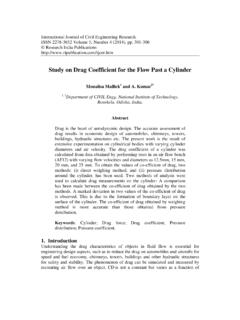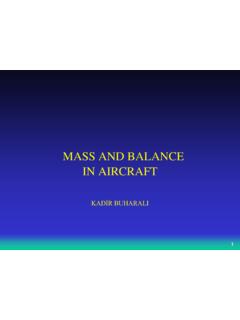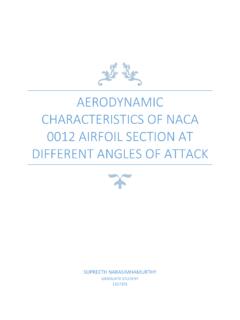Transcription of AIRCRAFT STABILITY AND CONTROL ANALYSIS - PUC-Rio
1 20 de Junho de 2014 AIRCRAFT STABILITY AND CONTROL ANALYSIS Rafael Basilio Chaves AIRCRAFT STABILITY AND CONTROL ANALYSIS Aluno: Rafael Basilio Chaves Orientador: Mauro Speranza Neto Trabalho apresentado com requisito parcial conclus o do curso de Engenharia de Controle e Automa o na Pontif cia Universidade Cat lica do Rio de Janeiro, Rio de Janeiro, Brasil Acknowledgments First and foremost, to my parents, who have worked hard in the last 24 years to make me a great man and to give me the best possible education, providing me a comfortable life. For understanding the times that I needed to spend some nights at the laboratory working hard and for all incentive I had throughout my life.
2 To my friends outside the university that supported me: R mulo, Sabrina, Vin cius, Tatiane, Maxwell, Mariana, Rafael and Karoline. Thank you so much for understand me all the times I wasn t able go out and for the long periods with no news. You are also a great example to me. To Sheriton, Isabelle, Jos Carlos, Igor, R gis, Rodolfo, Bruno, Marcos and Daniel, my friends from PUC-Rio , that helped me in this long and difficult path to become an engineer. To Professor Mauro Speranza Neto, for supporting me at this work and for being the biggest supporter of our team. To my friends and teammates at Embraer, for showing how to be a better person, for all the lessons I have learned and for giving me all the support I need to become a great engineer.
3 To my team Aerorio, the responsible for my greatest glories, for putting me at the top of Brazil and World of Aerodesign competitions, winning national and international titles in SAE Aerodesign competitions, and for the pride of having a certificate from NASA Systems Engineering Award on my wall. This work is a way to give back everything you have done for me. To my grand-uncle Adilson, who came from a poor family in the countryside, son of a washwoman, the man who lived far away from any school, but learned four different languages by himself and become the first engineer in the history of my family when just the wealthy people could have a higher edcation. My grand-uncle has died victim of a brain cancer when he was 40 years old.
4 I was a three-year-old child when it happened, but his example inspired me to become who I am. Finally, thank you for all the people who supported me all this time. Life is about passions, thank you for sharing mine Michael Schumacher, best driver in the history of Formula 1. Abstract Many of the parameters of an airplane design are empirical and based on accumulated knowledge. Some others are acquired using CFD or another finite element ANALYSIS software. The experimental data has a strong influence in an AIRCRAFT design. STABILITY and CONTROL ANALYSIS is an important discipline to consider when designing an AIRCRAFT . An appropriate ANALYSIS can overcome deficiencies enforced by others disciplines, such as aerodynamics and loads.
5 The efficiency of the CONTROL surfaces can also be maximized by a proper ANALYSIS . In this work, all the requirements of static and dynamic AIRCRAFT STABILITY will be analyzed. This two topics are divided into longitudinal, lateral and directional modes. Another important element in STABILITY ANALYSIS is the static margin for free and fixed stick. This margin in a crucial parameter that determines certain behaviors related to AIRCRAFT 's maneuverability. This work has the objective to analyze the STABILITY and CONTROL of an AIRCRAFT designed to compete in SAE Aerodesign Brasil 2013. Keywords: AIRCRAFT , STABILITY , CONTROL Contents 1. Introduction .. 1 Static STABILITY .. 1 Dynamic STABILITY .. 2 2.
6 Forces and Moments .. 5 Thrust .. 5 Drag .. 5 Lift .. 5 Moments .. 5 3. Airfoil .. 7 Lift Coefficient ( ) .. 7 Drag Coefficient ( ) .. 7 Moment Coefficient ( ) .. 7 Airfoil ANALYSIS .. 7 4. AIRCRAFT Overview .. 9 Conceptual Project .. 9 Fuselage .. 9 Wing .. 10 Tail .. 10 5. Static STABILITY And CONTROL .. 12 Static Margin .. 12 Longitudinal STABILITY .. 13 Longitudinal CONTROL .. 15 Lateral and Directional STABILITY .. 16 Directional 17 Roll CONTROL .. 18 6. Dynamic STABILITY .. 19 aerodynamic force and moment representation .. 19 Derivatives due change in forward speed .. 19 Derivatives due to the pitching velocity .. 20 Derivatives due the time rate of change in the angle of attack .. 21 Derivatives due to the rolling rate.
7 22 Derivative due the yawing rate .. 22 Longitudinal motion .. 24 Lateral-directional motion .. 28 7. Conclusion .. 31 8. References .. 32 List of Figures Figure 1: Stable, unstable and neutral systems behaviors .. 1 Figure 2: Time response for a real and positive pole .. 3 Figure 3: Time response for a real and negative pole .. 3 Figure 4: Oscillatory unstable mode .. 4 Figure 5: Oscillatory stable mode .. 4 Figure 6: Forces and moments acting in AIRCRAFT axis .. 5 Figure 7: Velocity components .. 6 Figure 8: Variation of in different angles of attack and Reynolds number .. 8 Figure 9: Bottom view of the fuselage .. 9 Figure 10: Hopper's 10 Figure 11: 3D view of wing .. 10 Figure 12: Downwash angle .. 13 Figure 13: AIRCRAFT behavior for longitudinal static STABILITY .
8 14 Figure 14: Trim abacus .. 15 Figure 15: Sidewash vortices .. 16 Figure 16: Moment coefficient values for lateral mode .. 17 Figure 17: Aileron deflection effect .. 18 Figure 18: Flying qualities for short period mode .. 25 Figure 19: Short period time response .. 26 Figure 20: Long period time response .. 27 Figure 21: Dutch Roll mode .. 28 Figure 22: Spiral mode .. 29 Figure 23: Poles for lateral-directional motions .. 30 1 1. Introduction The STABILITY and CONTROL engineer studies how well an AIRCRAFT can fly and how easy it is to be controlled. We mean by STABILITY , the tendency of an AIRCRAFT to return to its equilibrium point after a disturbance is aplied on it. This disturbances may be an input of the pilot or an atmospheric phenomena, such as: wind gusts, wind gradients and turbulence.
9 An stable AIRCRAFT must to perform a flight where the pilot does not have to CONTROL it all the time, in order to correct any deviation caused by small disturbances. Aircrafts with no inherent aerodynamic STABILITY are unsafe to fly, however, there are artificial STABILITY electronic systems that makes the operation of such AIRCRAFT possible. To perform a mission safely, an AIRCRAFT has to be able to peform a stable flight and have the capability to maneuver, in a large range of altitudes and velocities. The efficiency of the CONTROL surfaces of an airplane is also a topic studied by STABILITY and CONTROL engineers. There are the modes of motion to analyse in order to fullfil the requirements of STABILITY . The AIRCRAFT must have longitudinal, lateral and directional stable motions.
10 The STABILITY concept is basically divided in two topics, that will be explaned below. Static STABILITY The static STABILITY is the initial tendency of an AIRCRAFT to return to its equilibrium state after a disturbance. A good example of this kind of STABILITY is shown in the next figure, if some external agent moves the ball to any place in the first condition, it has the tendency to return to the botton of the curved surface, the gravity performed a restoring force to take the ball to its equilibrium point, we denote this kind of system stable. For the second condition, any force applied in the ball will make it move away of the theoric equilibrium point, this condition makes the system unstable. For the third situation, the ball will stay in any position it is left, characterizing a neutral system.


